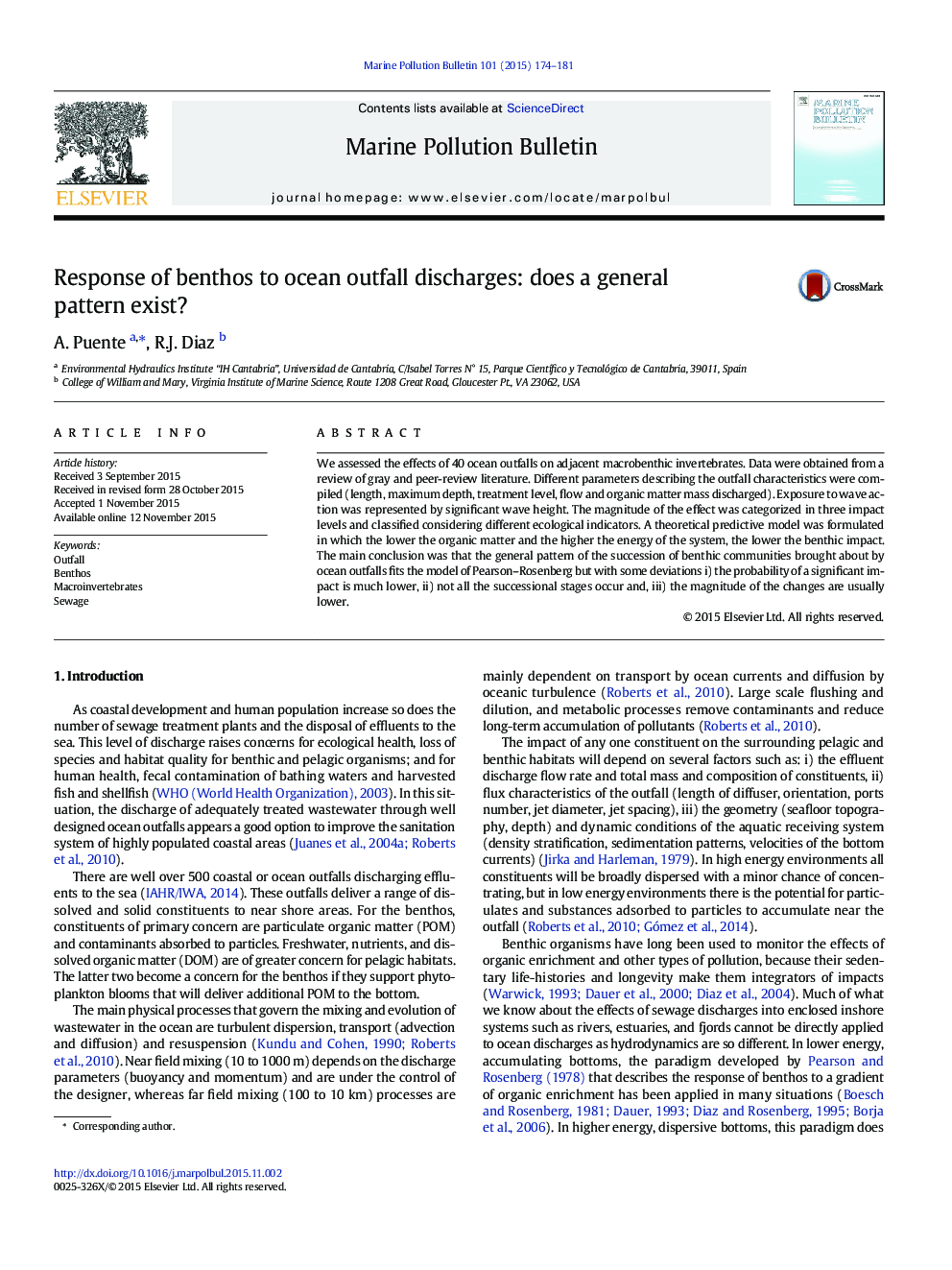| Article ID | Journal | Published Year | Pages | File Type |
|---|---|---|---|---|
| 4476600 | Marine Pollution Bulletin | 2015 | 8 Pages |
•Discharges of organic matter generate impacts in benthic macrobenthic assemblages.•The magnitude of benthic impact generated by ocean outfalls is not widespread.•A theoretical predictive model of benthic impact is formulated.•The model combine the organic matter discharged and the energy of the system.
We assessed the effects of 40 ocean outfalls on adjacent macrobenthic invertebrates. Data were obtained from a review of gray and peer-review literature. Different parameters describing the outfall characteristics were compiled (length, maximum depth, treatment level, flow and organic matter mass discharged). Exposure to wave action was represented by significant wave height. The magnitude of the effect was categorized in three impact levels and classified considering different ecological indicators. A theoretical predictive model was formulated in which the lower the organic matter and the higher the energy of the system, the lower the benthic impact. The main conclusion was that the general pattern of the succession of benthic communities brought about by ocean outfalls fits the model of Pearson–Rosenberg but with some deviations i) the probability of a significant impact is much lower, ii) not all the successional stages occur and, iii) the magnitude of the changes are usually lower.
